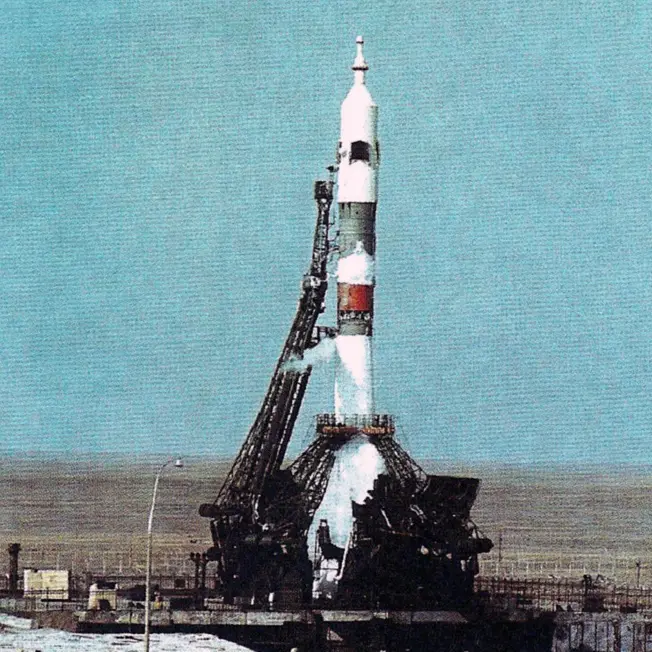Soyuz 18a (7K-T n°39)
Launch Failure
Liftoff Time (GMT)
11:04:54
Saturday April 5, 1975
Mission Details
Launch Notes
The third stage didn't separate from the second stage, and the engines melted the separation between the two stages, severely deflecting the launcher. With the fairing already separated, the Soyuz ship will use its own engine to eject in an emergency, and the ship will successfully land on the ground. The cosmonauts named the spacecraft Урал ("Ural").
Soyuz 18a (7K-T n°39)
Soyuz 18a (7K-T n°39), was an unsuccessful launch of a crewed Soyuz spacecraft by the Soviet Union in 1975. The mission was expected to dock with the orbiting Salyut 4 space station, but due to a failure of the Soyuz launch vehicle the crew failed to make orbit. The crew consisted of commander Vasily Lazarev, and flight engineer Oleg Makarov, a civilian. Although the mission was aborted and did not accomplish its objective, the craft exceeded the Karman line altitude of 100 kilometers and therefore reached a suborbital spaceflight, which the crew survived. The crew, who initially feared they had landed in China, were successfully recovered. The accident was partly disclosed by the normally secretive Soviets as it occurred during preparations for their joint Apollo-Soyuz Test Project with the United States which flew three months later. Lazarev never flew to space again and never fully recovered from the accident; Makarov made two more flights on board a Soyuz (both of which were to the Salyut 6 space station). This is Soyuz's 31th flight, and 17th crewed flight. The Soyuz is a Soviet crewed spaceship, developed to made manned lunar missions. This version called 7K will fly 4 times on the giant launcher N1, and several tens of times on Proton to fly over the Moon, which will be successful during the mission Zond 4. Soyuz will become the first spacecraft to transport living beings to the Moon during the flight of Zond 5, with two turtles. Subsequently, it is adapted to low orbit and will fly on the Soyuz launcher to serve the Salyut and Mir stations and the ISS.
Low Earth Orbit
1 Payload
6,830 kilograms
Launch Site
Stats
Soyuz
29th
Mission
2nd
Mission of 1975
OKB-1
916th
Mission
20th
Mission of 1975
1975
26th
Orbital launch attempt

